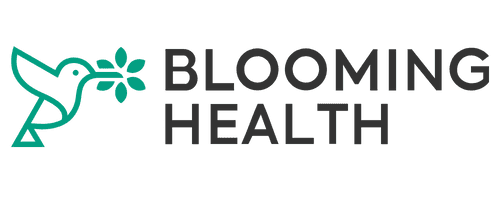Aug 22, 2025
At Blooming Day Ohio 2025, community leaders met to strategize on ways to build stronger, more connected systems that actually work for the people they’re meant to serve. The day closed with a keynote from Dr. Patrick Runnels. As Chief Medical Officer of Population Health at University Hospitals, Dr. Runnels has spent years on the front lines of healthcare transformation. His talk, “The Role of Health Systems in Alleviating Social Burdens,” offered a candid and deeply insightful look at why current approaches fall short and how we can begin to fix them.
Dr. Runnels outlined a simple but urgent goal: “to get the highest possible value for every dollar we spend, the best outcomes we can get for the money we’re putting in.” This equation for better outcomes at lower cost is at the heart of population health. The path to achieving it requires a radical shift in how we design, fund, and scale social care delivery.
The Hidden Cost of Provider-Centric Workflows
Runnels pointed out some of the existing issues with current workflows to address social drivers of health. “We said, ‘Let’s do better in healthcare at managing social drivers,’ but we added that to a system that already looks like this”. He shared a meme showing a person calmly drinking coffee while surrounded by fire. “That’s what it feels like to be a clinician or social worker today.”
He outlined how typical workflows add complexity rather than reducing it, “We’ve sandwiched the patient between the provider and the CBO... and we’re driving the need based on what the provider needs.”
This model creates friction at every stage. New expectations for documentation, bidirectional communication, and coordination, which overwhelms already strained systems.
Five Rules for Building Smarter Systems
To address the systemic disconnect between healthcare and social services, Dr. Patrick Runnels outlined five guiding principles. Each one centers on a simple but powerful premise: reduce friction and restore the human connection at the heart of care.
1. Center the relationship between the individual and the service provider
“[social determinants of health]—resolving them should be centered on the reciprocal relationship between an individual with a need and the person providing the solution to that issue.”
This relationship, he argued, should be the anchor of any intervention, “That eliminates all the other frictions as often as possible.”
2. Avoid provider-centered workflows that minimize stakeholders and complexity
When systems are built around healthcare providers instead of community providers and patients, they become cumbersome and ineffective.
“As soon as you add another person into the mix, which is often necessary and often a really good thing, you have just created a scenario in which another person has a workflow, another person has expectations for their job, and they have to put reporting in.”
The result? Delays, duplication, and unmet needs.
3. Relentlessly reduce friction
Dr. Runnels emphasized that smoothing pathways between people and services should be a top design priority:
“We should always be working at all points to reduce friction. Not ‘Are we all communicating really awesomely all the time about everything?’ Not ‘Have I perfectly solved every problem?’ but ‘Have I prioritized the right problems at the right place at the right time?’”
4. As patient complexity rises, health systems must directly address social needs
When a patient’s clinical and social needs are deeply intertwined, health systems can’t afford to stay hands-off.
“If I have a highly complex set of chronic health conditions... and then I add in all the social determinants... well, now my care directly is heavily tied into getting at the drivers of the person's health issues.”
In those cases, providers should see addressing social needs as part of medical care, not an add-on.
5. When social needs are prevalent, embed services directly into care environments
For populations where certain needs—like food or transportation—are widespread, it makes more sense to build solutions into care settings.
“Let’s get food in our locations directly,” he suggested, referencing examples from MetroHealth and Neighborhood Family Practice.
“That starts to become a very valuable way and an efficient way to get needs met that again reduces friction, because the populations all come into that space anyway.”
The Role of Technology: Shared Infrastructure and Scalable Innovation
Runnels criticized the siloed approach of individual health systems running parallel, uncoordinated efforts, “As much talking as we’re doing, as much as we’re collaborating, we are in fact driving individual approaches... It’s creating redundancy, expense, and friction.”
Dr. Runnels believes the next generation of technology must eliminate friction—not add to it. He laid out a vision for “Generation Two” tools that:
Prioritize the direct relationship between the individual and CBO
Passively provide updates to providers without excessive back-and-forth
Reduce manual work for both healthcare and social care partners
Use AI to triage and automate needs for lower-complexity patients
“We don’t need CHWs to see everyone. Tech can help us offload the low-acuity folks and focus people power where it matters most.”
Dr. Runnels closed with optimism grounded in pragmatic, systems-level thinking: “I don’t have the perfect map. But I absolutely see a path where we flip these numbers. Where social services get the resources they need—and where we all get better outcomes.”
Why Blooming Health is Leaning In
At Blooming Health, we’re building the exact kind of infrastructure Dr. Runnels described, designed to reduce friction, streamline referrals, and improve communication between individuals and community service providers.
Our platform automates assessments, delivers real-time data, and supports closed-loop referrals, all while reducing the burden on both health systems and CBOs. Easily integrate with EHRs and other systems to eliminate double-entry and minimize the number of platforms your team is on.
It’s time for health and social care to stop working in parallel and start working in partnership. Get a demo today.








